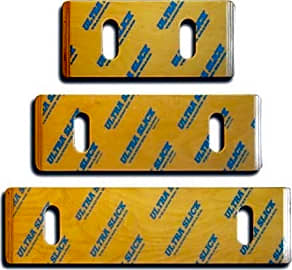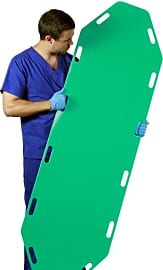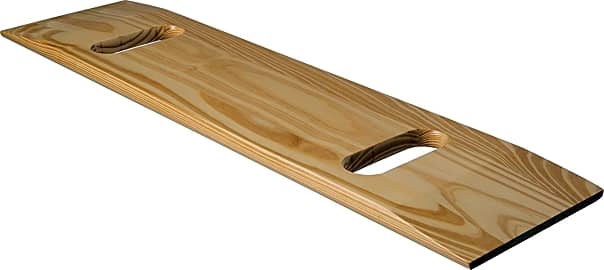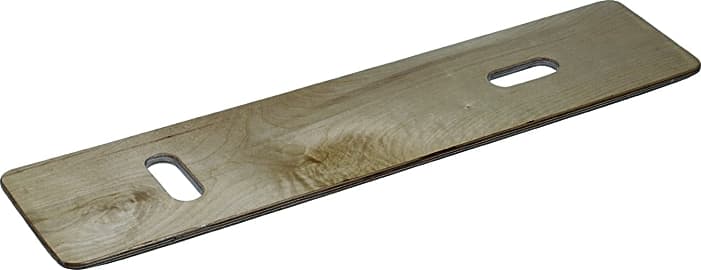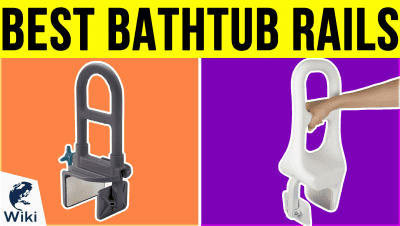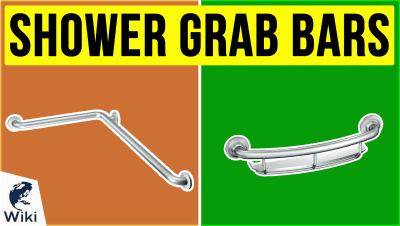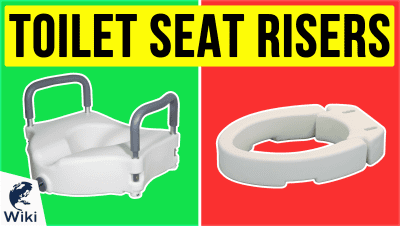The 10 Best Transfer Boards

This wiki has been updated 39 times since it was first published in August of 2015. For hospital, nursing home, or private home use, these transfer boards make it much easier to move someone from a bed or seat to a wheelchair and vice versa. They enable individuals and caregivers to navigate tricky maneuvers, like getting someone into the shower, with less risk of hurting themselves or their patient. Just be sure to follow all instructions, as improper use can lead to injury. When users buy our independently chosen editorial choices, we may earn commissions to help fund the Wiki.
Editor's Notes
February 26, 2020:
Transfer boards like those found on this list can greatly reduce the chance of injury when moving a disabled person from a wheelchair to a bed, car seat, or bathtub. They also make self transfers significantly easier.
Transfer boards are available in either wood or a synthetic material, usually some form of plastic. While nearly all of the wooden options sold on the market are sealed to prevent them from absorbing moisture and bacteria, we still recommend plastic models like the Drive Medical RTL6046, Beasy Bariatric Basic Plus 32, and Rehabilitation Advantage BD1056 for bathroom use. Not only are these easy to sterilize, but there is no chance of the finish wearing off from constant use, which can result in the absorption of said water and bacteria if using a wooden unit. Another good option for bathroom use is the Composite Medical Distributors UltraSlick, which has a plastic exterior and wooden core. This results in a board that has less flex than most plastic models, yet still offers their same hygiene benefits. It also boasts an extra-slick surface for smooth transfers.
Despite the sanitary benefits of plastic options, we do realize that many people may food wood models more attractive, not too mention more eco friendly. When it comes to these, the Duro-Med Bariatric 518-1800 is one of our favorites due to its beveled edges, rounded corners, and non-slip grip pads on the bottom to help ensure safe transfers. We also think the Mobility Transfer Systems SafetySure Double-Notched bears special mention for its side cutouts that can be wrapped around wheelchair arms or bathtub rails. Another interesting option is the Beasy Board Beasy II. Thought it does seem rather overpriced, many may find the sliding chair to be easier on the skin, since it essentially eliminates all the friction associated with other models.
For very heavy individuals, we have included the Duro-Med Bariatric 518-1800 and Beasy Bariatric Basic Plus 32, both of which can support over 400 pounds.
Whichever model you choose, it is important that you take your time and go slowly whether moving yourself or a patient. You must also make sure that each end is securely supported and follow all the manufacturer's guidelines regarding weight limits and operation to ensure a safe and pleasant experience.
Special Honors
Allen Medical A-83000 The Allen Medical A-83000 is a versatile option that can be used for prone and fowler’s position transfers. It has a soft core to make for a comfortable patient experience, and it can be folded up for storage when not in use. Additionally, it is lightweight to make it easier on medical staff, and it features a carrying strap. allenmedical.com
Samarit Transglide The Glideboard is designed to help patients move from wheelchairs to SUVs and other high vehicles. It is crafted from a nearly-unbreakable high-density polyethylene material, so it can last through years of regular use without its integrity being compromised, and is boasts an acid-resistant surface that is easy to disinfect. samarit.com
Who Needs A Transfer Board
The main benefit of a transfer board is that they allow a patient to move themselves, or be moved, without having to use their legs.
Transfer boards are one of the safest and most convenient methods to transfer patients. They are typically made from wood or some type of rigid plastic and used to bridge two surfaces of roughly equal height. The main benefit of a transfer board is that they allow a patient to move themselves, or be moved, without having to use their legs. They also break the transfer up into many small movements instead of one big, jarring motion.
Transfer boards are integral in independent and assisted transfers. An independent transfer is when the patient performs all of the actions involved in the transfer. This includes setting up the board, lifting themselves off of the current surface they are sitting or lying on, and sliding themselves across the board. In assisted transfers, the aide will perform some of the actions and the patient will perform others. For example, the aide may set up the board, but the patient does the work of sliding themselves across it. Another example would be when the aide and the patient work together to slide the patient across the board, thereby making it easier for the aide and also making the patient feel useful.
The best candidates for transfer boards are those with good upper body strength, but who have difficulty standing, such as paraplegics or hemiplegics. Paraplegics are often capable of completing fully independent transfers, whereas hemiplegics will generally need an assisted transfer. Patients who have recently had a knee replacement, ankle surgery, or who are in a cast for a broken leg are also good candidates for transfer board use. Any patient that is combative, cannot sit independently, or suffers from any form of dizziness or disorientation is not a candidate for board transfers.
Benefits Of A Transfer Board For Caregivers And Patients
Transfer boards are not just beneficial for the patient, but also for the caregiver. Physical injury of caregivers while turning, transferring, of lifting a patient is actually quite frequent. Studies have found that nearly 52 percent of caregivers have experienced some form of musculoskeletal injury when moving a patient, usually affecting the back. This is because the spin provides the majority of the support for the human body and is one of the most vulnerable areas to injury caused from repetitive lifting of heavy objects.
This results in a higher quality of life and increased dignity, which are vital to mental well-being.
A recent survey of 46 non-professional caregivers admitted to hospitals in West Yorkshire, England for care-related injuries found that 36 of them had injured themselves while lifting their loved one. The study found that toileting was one of the most difficult tasks, most likely because it involves a succession of lifts and awkward movements on both the caregiver's and patient's part. The timing is often unpredictable, as well, so there is rarely a chance that the caregiver is able to ask for additional help.
It is not just the caregiver that is at risk of injury during transfers, but the patient, too. Of the 46 caregivers surveyed, 16 admitted to accidentally injuring their loved one at some point during a transfer or other handling. If a caregiver injures their back during a transfer or doesn't use the proper stance and loses their balance, both the patient and caregiver may fall, resulting in additional injuries. In addition to reducing the possibility of patient injury, a transfer board can provide a sense of independence. A disabled person who previously required aid to move from their wheelchair to their bed or toilet may be able to use a transfer board to accomplish these tasks independently. This results in a higher quality of life and increased dignity, which are vital to mental well-being.
There are a number of other accessories that can also help to minimize the chance of patient or caregiver injury. Securely installing grab bars near the toilet or in the shower give the patient more ability to assist the caregiver during transfers. Toilet seat risers reduce the need for the caregiver to lean over as far when setting a patient onto the toilet, reducing strain on the back. You can also purchase an adjustable shower bench to make transfers to and from the tub easier.
Independent Transfer Board Usage And Safety Tips
You should only use a transfer board for transfers between two surfaces of roughly equal height. If there is more than a half-inch height discrepancy between the two surfaces, performing a transfer is significantly more difficult and there is an increased risk of injury. If you find that your wheelchair and your bed, couch, or any other surface that you would like to perform independent transfers to are more than a half-inch apart in height, install risers on your furniture to make them level. The two surfaces must also be relatively close to each other. A transfer board should always significantly overlap the edges of both surfaces. Never try and perform a transfer over a span that is too large for the transfer board you own.
You may need to move your upper body in one motion, and then individually slide each of your legs into the correct position.
During the transfer, use one hand to hold onto a stable surface to provide support. This may be an armrest on the wheelchair, a strategically placed grab bar, or the frame of a bed. Whenever transferring yourself from a wheelchair, always check to make sure the brake is securely locked into place. If performing the transfer with the help of a caregiver, you can use their shoulder for support.
Move slowly as you transfer yourself across the board. Perform your transfer in a series of small movements, rather than one or two large motions. This makes it safer and also gives you a chance to regain your balance between each movement. Always pay attention to the placement of your body parts during the transfer. You may need to move your upper body in one motion, and then individually slide each of your legs into the correct position.
If possible, you should always wear clothes or some other type of covering during transfers. This can be as simple as wrapping yourself in a sheet when transferring out of bed. Do your best to avoid dragging your buttocks to reduce the possibility of chafing caused by excessive friction.



